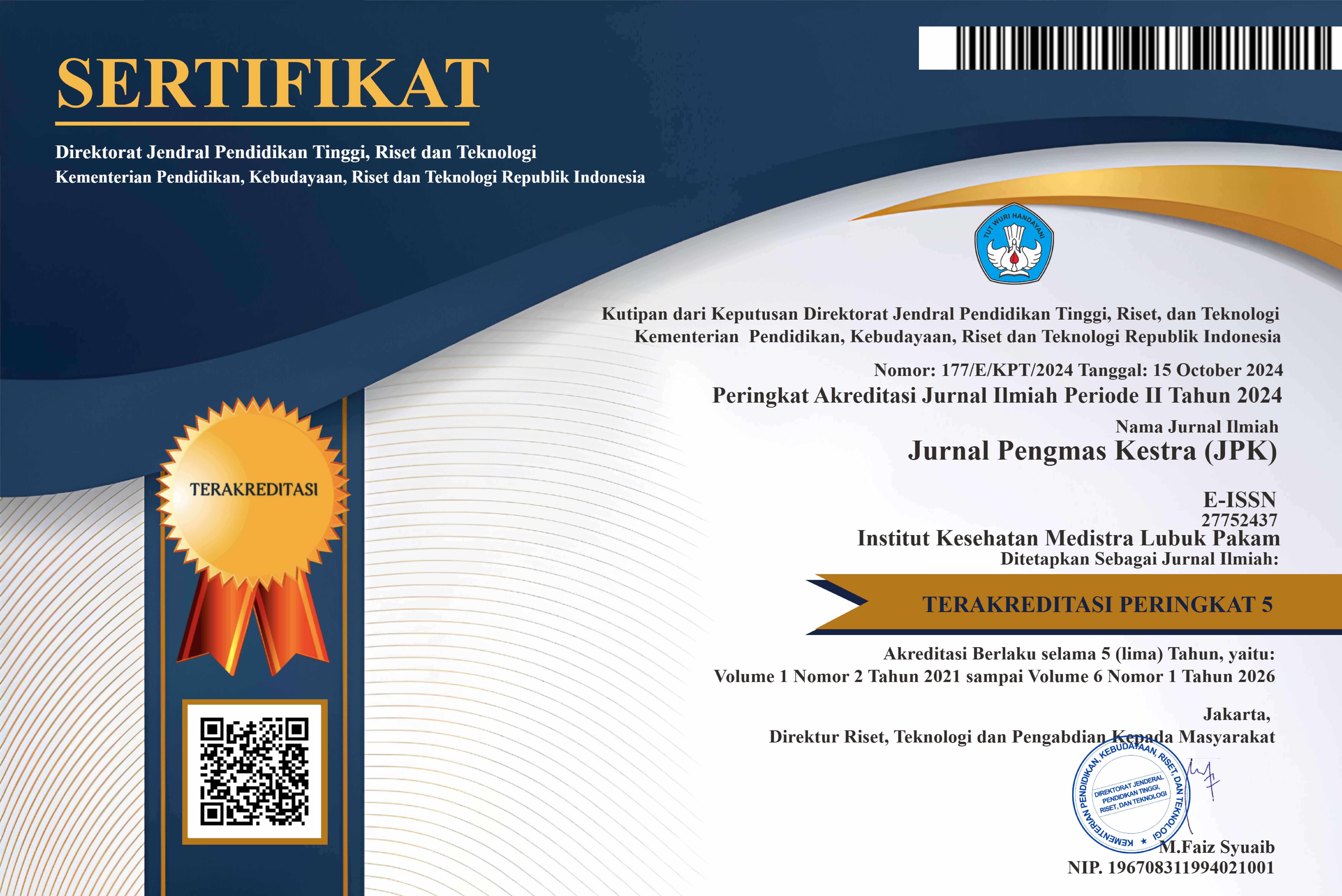Socialization of The Use of Melinjo Leaf Ethanol Extract (Gnetum gnemon L.) on Growth Salmonella typhi Bacteria
DOI:
https://doi.org/10.35451/jpk.v3i1.1149Keywords:
Melinjo leaves, antibacterial, Salmonella typhiAbstract
Gnetum gnemon L. has antibacterial activity against Salmonella typhi because it contains flavonoids, saponins, tannins, alkaloids, and steroids. Where these compounds play an important role as an antibacterial. The purpose of this service is to provide information to the public regarding the benefits of melinjo leaves which can act as an antibacterial agent. This service activity is carried out in the form of socialization using lecture, question and answer, and demonstration methods. The number of participants in this community service activity was 20 pharmacists at Grandmed Lubuk Pakam Hospital. Based on the results of the PkM activities carried out, it can be stated that there has been an increase in public knowledge regarding the efficacy of melinjo leaves as an antibacterial substance. This can be proven by the increase in post-test scores when compared to pre-test scores. The average increase in the knowledge of PkM participants was 21.5. On the other hand, the highest post-test score obtained was 85, while the lowest post-test score was 60. Meanwhile, based on the PkM material that had been socialized, the PkM participants understood that the results of phytochemical tests on melinjo leaf Simplicia showed that melinjo leaf extract contains compounds alkaloids, flavonoids, steroids, saponins, and tannins. Meanwhile, the antibacterial test showed that the inhibition zones of various concentrations included a moderate concentration of 40%, a moderate category of 60%, and a strong category of 80%. The average diameter of the inhibition zone increased with each concentration of melinjo leaves.
References
Afnidar. 2014. Fitokimia dan Uji Aktivitas Antibakteri Ekstrak Kalus Tumbuhan Sernani (Wedelia biflora (L)DC.). JESBIO Vol. III No. 4. Mei 2014.
Kurniawan, B., Aryana, W. F. 2015. Binahong (Cassia Alata L.) For Inhibiting The Growth of Bacteria Escherichia coli. J Majority, 4(4), 100-104.
Noor, M.A., dan M.L. Apriasari. 2014. Efektivitas Antibakteri Ekstrak Metanol Batang Pisang Mauli (Musa acumuminata) dan Povidone Iodine 10% Terhadap Streptococcus mutans. Jurna; PDGI. 63(2):78-83.
Novard, M. F. A., Suharti,. N., & Rasyid, R. (2019). Gambaran Bakteri Penyebab Infeksi Pada Anak Berdasarkan Jenis Spesimen dan Pola Resistensinya di Laboratorium RSUP DR. M. Djamil Padang tahun 2014-2016. Jurnal Kesehatan Andalas, Vol 8 (2S) : 26-32
Rakhmadhan Niah. (2019). Uji Aktivitas Ekstrak Etanol 96% Daun Karamunting (Melastoma Malabathricum L.) Terhadap Salmonella Typhi. Banjarmasin: Akademi Farmasi Isfi Banjarmasin
Sari, R., Muhani, M., & Fajriaty, I. (2017). Uji Aktivitas Antibakteri Ekstrak Etanol Daun Gaharu (Aquilaria microcarpa baill). Terhadap Bakteri Strapylococcus aureus Dan Proteus mirabilis. Pharm Sci Res, Vol 4 (3): 143-154
Stevani. 2016.Kajian Etnobotani Tumbuhan Obat di Desa Cicangkang Bandung Barat. Skripsi FKIP, UNPAS.
Yonni Ariyanto. (2019). Daya Hambat Ekstrak Cacing Tanah (Lumbricus Rubellus) Kering Terhadap Pertumbuhan Bakteri Salmonella Typhi. Klaten: Program Studi D Iii Farmasi Stikes Duta Gama Klaten
Downloads
Published
Issue
Section
License
Copyright (c) 2023 Aminah Syarifuddin, Chandra Pranata, Novidawati Boru Situmorang, Debi Dinha Octora, Lili Ramadhani

This work is licensed under a Creative Commons Attribution 4.0 International License.
Copyright in each article is the property of the Author.




















